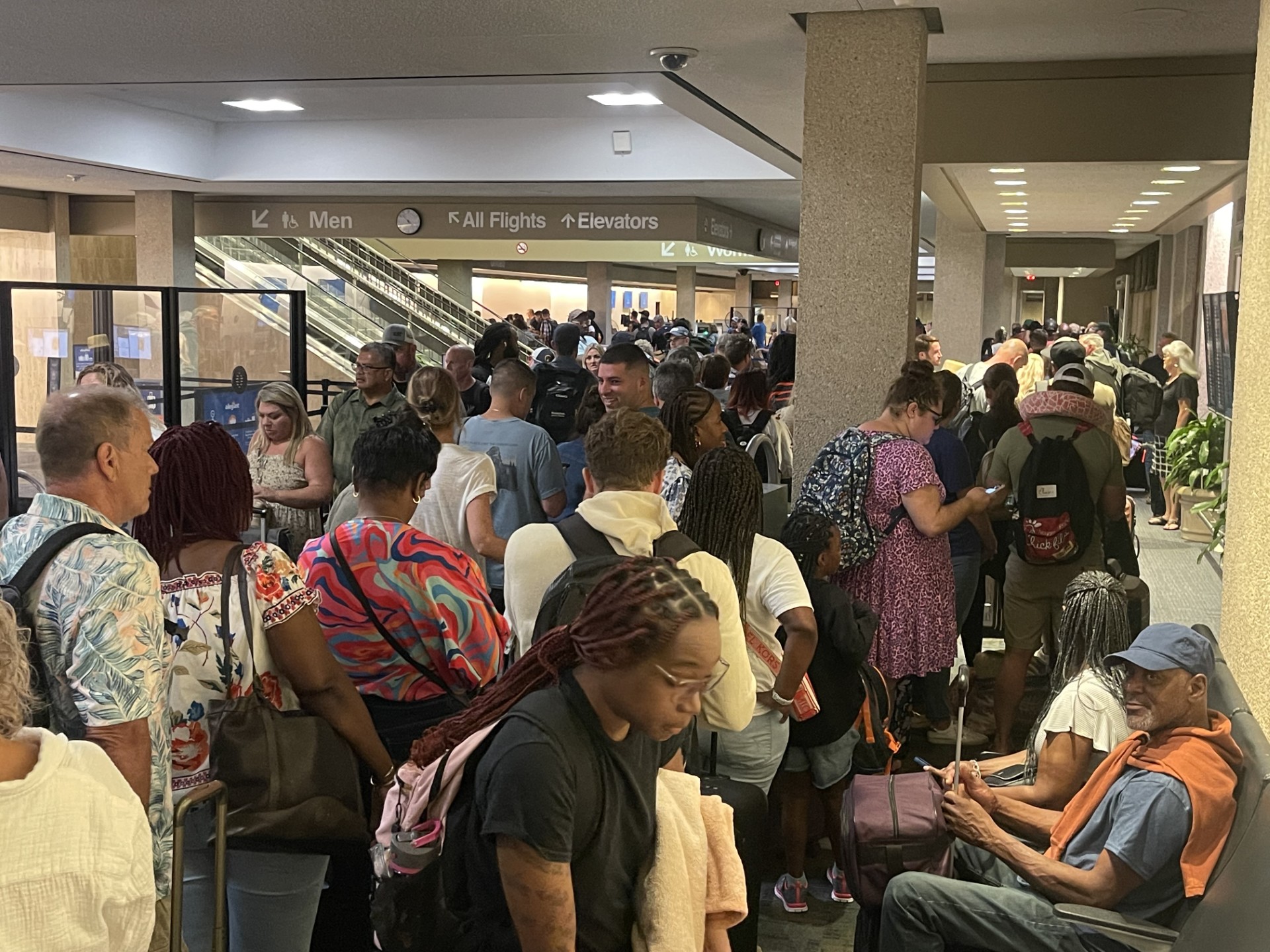Raynard “Ray” Gibbs is a candidate for Smithfield Town Council. His name will appear on the ballot on November 5, 2024.
Gibbs is running against four challengers for Smithfield Town Council.
The first day of in-person early voting at your local registrar’s office for this election is Friday, Sept. 20, 2024. Click here to see who is on your ballot.
10 On Your Side reached out to all of the candidates running in this race, with a request for a bio and a list of questions to answer. If you do not see the candidate listed with a profile, we did not receive one.
Name: Raynard “Ray” Gibbs
Biography: Raynard Gibbs, a distinguished retiree of the United States Navy, was born and raised in Cuba, Alabama. After a commendable 27-year naval career, he has continued to serve his community with dedication. He is married to Gloria Blunt from Newport News, Virginia, and is the proud father of two accomplished daughters: Captain Niesha R. Gibbs, an officer in the U.S. Air Force JAG Corps, and Symone R. Gibbs, a law student at Washington and Lee School of Law.
In his post-military career, Mr. Gibbs has made significant contributions as a member of the Smithfield Town Council, Isle of Wight Planning Commission, and Smithfield Planning Commission, where he plays a key role in shaping local development. He has also hold leadership roles such as President of the Hampton Omega Foundation and is actively involved on the Boards of Trustees for the Applied Medical Group, Sweet Haven HCOG, and Mind of Christ Ministries.
As an entrepreneur, Mr. Gibbs owns RG Property LLC and KG Investment Group LLC, further demonstrating his business acumen. His commitment to faith is evident in his role as Assistant Pastor at Sweet Haven HCOG. Additionally, he is a proud member of Omega Psi Phi Fraternity, Inc., reflecting his lifelong dedication to service and brotherhood.
Why are you running for this office?
I’m running for Town Council because I am deeply committed to our community and dedicated to guiding its future while fostering bipartisanship. Public office is a profound responsibility—one that demands service to every resident, irrespective of differing viewpoints or voting preferences.
This role is not just about holding a position; it’s about rising above partisan divides and working collaboratively with individuals who may hold divergent perspectives. Effective governance is rooted in the ability to bridge gaps and unite diverse voices. This is the essence of democracy—an ongoing effort to collaborate, innovate, and build a shared future.
Throughout history, those who have served our towns have paved the way for progress and unity. It’s through their example that we have built communities we are proud of. I am committed to continuing this tradition, ensuring that every decision reflects our collective values and aspirations. Together, we can shape a brighter, more inclusive future for our town.
What is your view on growth management in your community?
When evaluating growth management, I’m committed to a thorough and inclusive review process that reflects our community’s values and aspirations. This process involves not only the Planning and Zoning Commission, Town Council, and Board of Supervisors, but also a Citizen Task Force, ensuring a broad and balanced perspective.
Our evaluation will be guided by the following key principles:
- Environmental Stewardship: We will prioritize developments that respect and enhance our town’s natural beauty, ensuring the sustainable management of our valuable natural resources.
- Infrastructure Readiness: We will rigorously assess whether the necessary utilities, access roads, drainage systems, and other essential facilities are already in place or are planned to support the proposed development.
- Community Impact: The development should promote the overall well-being of our town and its surrounding areas, while preserving the unique charm of town.
- Alignment with the Comprehensive Plan: We will ensure that the development integrates sufficient open space areas that align with the goals of our Comprehensive Plan.
- Traffic and Safety Considerations: Effective measures must be included to minimize traffic congestion, enhance public safety, and ensure smooth pedestrian and bike circulation. The design should facilitate a safe and convenient transportation network for everyone.
By adhering to these criteria, we ensure that future developments not only meet our highest standards of planning and sustainability but also enhance the quality of life for all residents. Together, we can build a future that reflects our shared values and supports the vibrant community we ALL cherish.
What is your view on taking money from individuals who will likely have business before the city?
Public–private partnerships (PPPs) have indeed become a prominent mechanism for executing major infrastructure projects. They involve collaboration between public sector entities and private companies, aiming to leverage the strengths of both sectors to enhance project outcomes.
Benefits of PPPs:
- Efficiency and Effectiveness: PPPs can lead to greater efficiency and effectiveness throughout the project lifecycle. Private sector involvement often brings innovative solutions, advanced technology, and management expertise that can improve the quality and speed of project delivery.
- Cost Distribution: By utilizing PPPs, the financial burden of large-scale projects can be spread out over a longer period. This can alleviate immediate fiscal pressures on public budgets and allow governments to allocate resources to other essential areas where private investment may not be feasible.
- Risk Sharing: PPPs enable the distribution of risks between the public and private sectors. The private partner typically assumes risks related to construction, maintenance, and operational performance, which can incentivize higher standards and better project outcomes.
Considerations and Limitations:
- Not a Budgetary Fix: While PPPs offer many advantages, they should not be viewed as a panacea for public sector budget constraints or financing gaps. Their primary function is to deliver projects efficiently and effectively, rather than to address underlying budgetary shortfalls.
- Complexity and Management: PPPs can involve complex contractual arrangements and require robust management and oversight to ensure that both parties meet their obligations. Effective governance is crucial to balance interests and address any issues that arise during the project’s lifecycle.
- Long-Term Commitments: The nature of PPP agreements often involves long-term commitments from both the public and private sectors. This can include extended periods of operation and maintenance, which necessitates careful planning and negotiation to ensure that the arrangement remains beneficial over time.
In summary, while PPPs can be a powerful tool for delivering high-quality infrastructure projects efficiently, they should be implemented with a clear understanding of their role and limitations. Their successful application hinges on effective planning, risk management, and alignment of interests between public and private entities.
How will you still value constituents with whom you disagree?
In today’s interconnected world, it’s clear that no single individual possesses all the answers. As leaders, our responsibility is to facilitate and integrate a range of perspectives on any given issue. By embracing a design mindset, we can steer discussions in a way that productively incorporates diverse viewpoints and ensures those perspectives are given the recognition they deserve. This approach enables us to craft dialogues where critical information is not only heard but thoughtfully acknowledged and considered, thereby fostering more informed and equitable decision-making.


























































